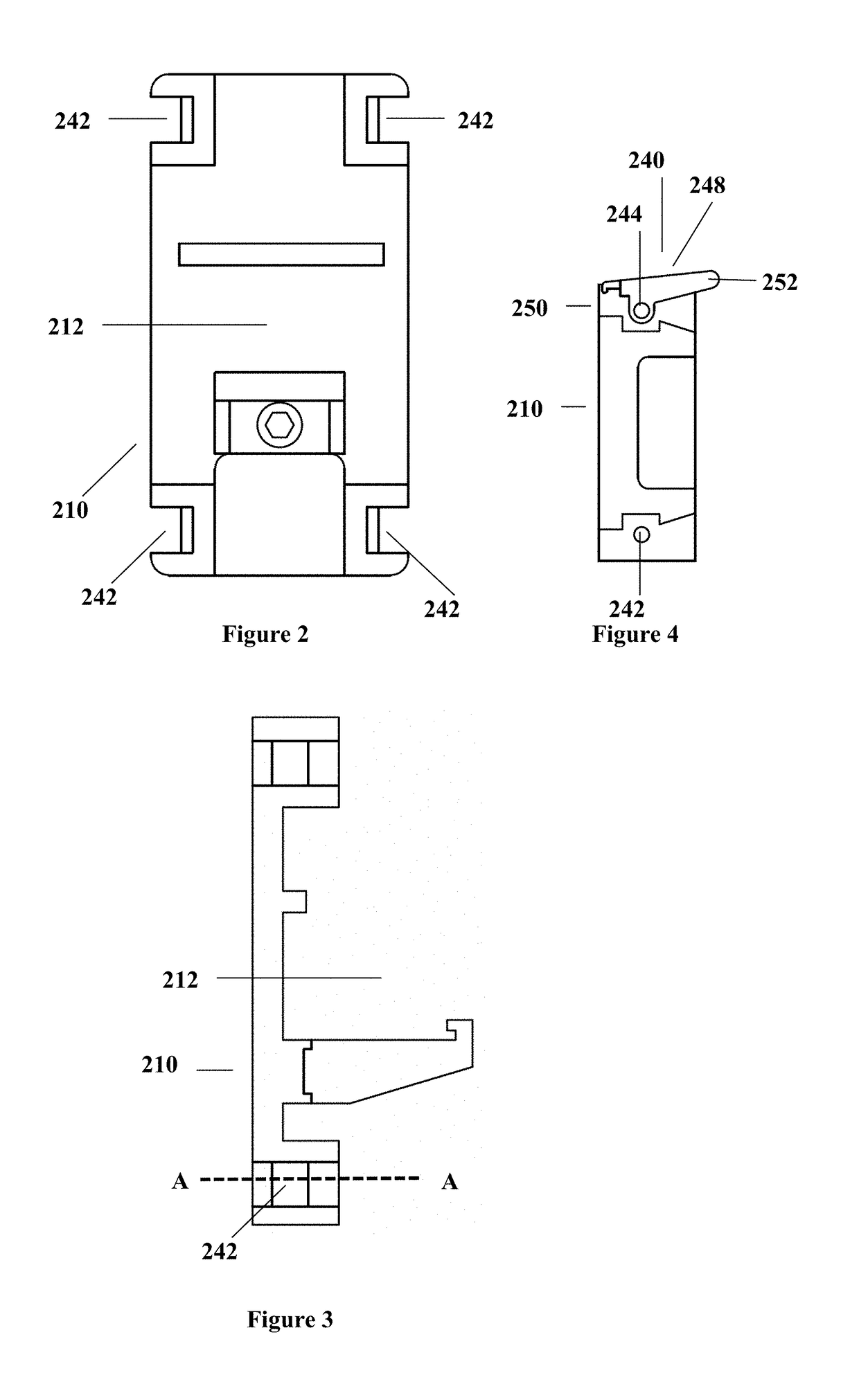Alignment apparatus
a technology of aligning apparatus and aligning parts, which is applied in the field of aligning apparatus, can solve the problems of complex alignment of prosthetic components, patient pain and many other potential complications, and the most difficult steps in total hip replacement surgery, and achieve the effect of improving
- Summary
- Abstract
- Description
- Claims
- Application Information
AI Technical Summary
Benefits of technology
Problems solved by technology
Method used
Image
Examples
Embodiment Construction
[0120]Embodiments and features of the present invention are illustrated with reference to FIGS. 1 to 14. In the figures, like numbers refer to like features.
[0121]FIG. 1 illustrates an apparatus 1 for aligning a sensor 10 relative to at least two anatomical reference points of a patient's anatomy. The apparatus 1 includes a body 20 having a central axis 22, a sensor mount 30, and at least two arms 40 extending from the body 20, wherein two of said at least two arms (40a, 40b) are simultaneously and equidistantly moveable relative to the central axis 22. The apparatus 1 also includes at least two aligners 50 connected to the at least two arms 40 for aligning with said at least two anatomical reference points.
[0122]The apparatus 1 includes an arm mechanism 60 for simultaneously and equidistantly moving the arms 40a, 40b relative to the central axis 22. The arm mechanism 60 operates manually and is geared. The arm mechanism 60 is a rack and pinion mechanism. Therefore, the arm mechanis...
PUM
 Login to View More
Login to View More Abstract
Description
Claims
Application Information
 Login to View More
Login to View More - R&D
- Intellectual Property
- Life Sciences
- Materials
- Tech Scout
- Unparalleled Data Quality
- Higher Quality Content
- 60% Fewer Hallucinations
Browse by: Latest US Patents, China's latest patents, Technical Efficacy Thesaurus, Application Domain, Technology Topic, Popular Technical Reports.
© 2025 PatSnap. All rights reserved.Legal|Privacy policy|Modern Slavery Act Transparency Statement|Sitemap|About US| Contact US: help@patsnap.com



